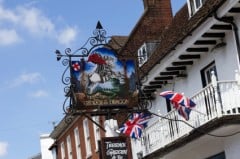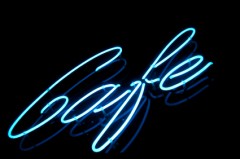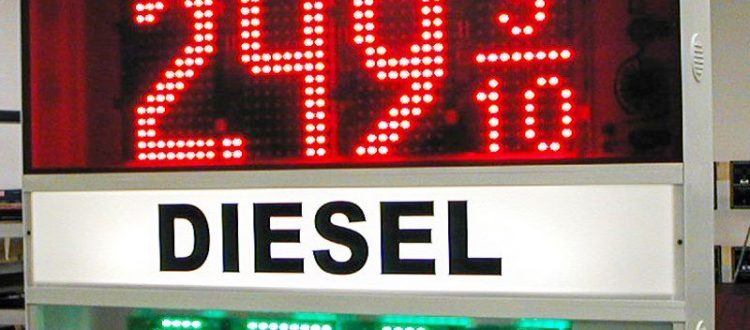In this second article on this history series, we’ll cover everything from the 17th and 18th centuries until the present, and my hope is that you’ll have a great handle, whether you wanted a handle on it or not, all about the signage making and the producers.
Hi again…as I said last time, if you look around, or drive around, when you live in any industrialized country on earth, your locale is full of signposts. Most of us simply accept that a sign maker made all of them, but that’s pretty much the extent of anyone’s thought on the subject.
How the Sign Maker Made Signs Up To the 18th Century
 As I stated in the final part of the last article, by the 18th century and into the 19th century, many signage professionals turned the art of their production into an art form, and some artists actually made their living doing mostly signs. In the 19th century also, some establishments began to use oil lanterns to light the surface of their displays, if they were available in the evenings for business, such as a pub or an inn or an apothecary. In a sense, this was the beginning of illuminated signage.
As I stated in the final part of the last article, by the 18th century and into the 19th century, many signage professionals turned the art of their production into an art form, and some artists actually made their living doing mostly signs. In the 19th century also, some establishments began to use oil lanterns to light the surface of their displays, if they were available in the evenings for business, such as a pub or an inn or an apothecary. In a sense, this was the beginning of illuminated signage.
While one might make some displays fancy, and others plain, the technology didn’t change dramatically in the 19th century, although one type could make other than from wooden items, has existed since possibly before this time were cast metal letters, particularly bronze. Due to the cost of bronze, the average producer probably didn’t do metal castings, and businesses were more able to afford to paint a wooden sign than to pay really big bucks for cast metals or plaques.
Adding Electricity to Art; How the Profession Changed in the 20th Century
However, with the introduction of electricity in the late 18th century, it was only a matter of time before an enterprising electrician would become a sign maker and completely change the industry.
Neon Sign
 In 1910, Georges Claude, an electrician, first demonstrated neon display to a large public forum at the Paris Auto Show. The result was electrifying (hahaha!). Neon became very popular by the late 1920’s and many learned how to bend neon into signs, especially in the US and Western Europe, and remained the most popular form of electrical signage into the 1960’s, when many switched over to the internally illuminated fluorescent type (actually developed in the 1920’s), replacing neon, most probably due to cost factors.
In 1910, Georges Claude, an electrician, first demonstrated neon display to a large public forum at the Paris Auto Show. The result was electrifying (hahaha!). Neon became very popular by the late 1920’s and many learned how to bend neon into signs, especially in the US and Western Europe, and remained the most popular form of electrical signage into the 1960’s, when many switched over to the internally illuminated fluorescent type (actually developed in the 1920’s), replacing neon, most probably due to cost factors.
Neon is still popular today, although due to it’s cost is not used nearly as much as it was in the past. With the advent of LED lighting and its adoption in place of neon, neon’s popularity has continued to erode, again, mainly due to cost. Neon will never be completely replaced, though, as it is still the brightest light in this business.
As of 2003, according to Signs of the Times industry magazine, 46% of all displays manufactured have fluorescent internal lighting, compared to 41% which are illuminated with neon. The big gainer recently has been animated LED (light-emitting diode) signage, also known as the electronic reader board.
Electronic Reader Board
The electronic reader board can be made as large as a huge billboard, and can have enough pixels (small LED lights) to make a moving picture like a movie screen. Oddly, while many municipalities have outlawed chase lights on the perimeter of a neon or fluorescent-lighted signage due to the motion being dangerous to drivers, LEDs are popping up all over the country with their moving and changing copy, pictures, and logos.
I am only somewhat amused at the contradictory nature of government. In case you couldn’t tell, I, myself and most of those in this industry are not big on government regulation; but as long as they’re able to collect taxes on animated LED graphics, they’ll probably continue to allow them, and the revenue on the manufacturers who sells them is significant for the government.
In Part 3, I’m going to back up chronologically and talk about printing, from papyrus to Gutenberg to the desktop printer. Until next time, remember, the world knows where it’s going because of us sign makers!
Popular Posts:




